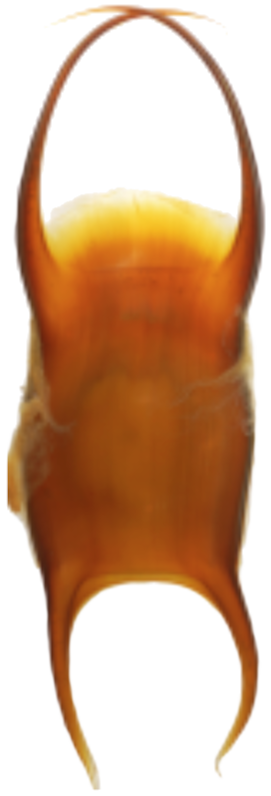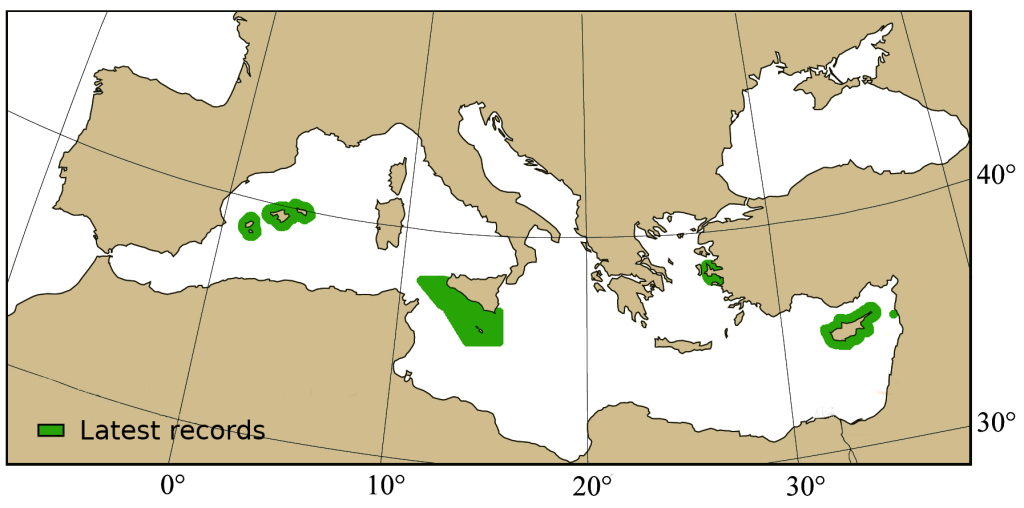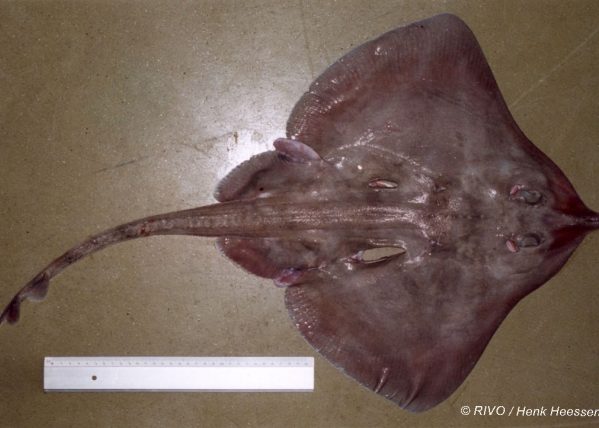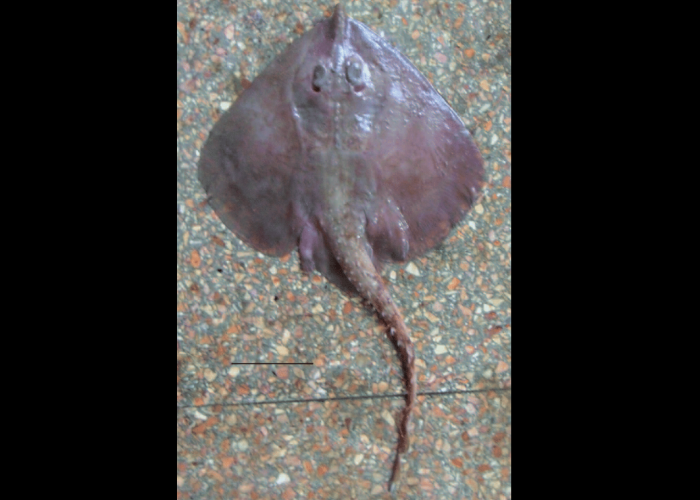Leucoraja fullonica
Common name : Shagreen ray
Order: Rajiformes
Family: Rajidae
Synonyms: Raja fullonica
Misidentifications: Leucoraja circularis
Short description
Relatively large body size. Pronounced and pointed snout. Rhomboid disc, with angled outer corners. Spiny dorsal surface, underside prickly on large areas. Currently 3-9 nuchal spines in a longitudinal row. Usually 8 thorns in a complete row around the inner margin of the eye, small thorns on the scapular. A row of 50 spines on each part of the midline, from shoulder to the first dorsal fin.
Color: Ash-gray dorsal surface. White ventral surface.
Measurements:
- Total length (TL): 40 – 80 cm (max 120 cm male and 117 cm female).
Swimming pattern: Undulatory and pelvic fin locomotion (walking and punting).
Egg case
Rectangular shape and pointed horns at the corners, deposited on sandy or muddy bottoms.
Size: 7.5-9.9 cm length, 4.5-4.7 cm wide.
Distinctive features:
- 5 cm > Egg-case length ≥ 3 cm
- Anterior horn length shorter than the egg-case length

Leucoraja: Egg case with long pointed horns. Anterior horns length greater than twice the posterior. Rear horns relatively long.
Rajiformes / Rajidae: Rectangular egg-case, width no greater than twice the capsule length.
Biology / Ecology
Feeds on benthic animals, with probably a preference for fish.
Reproduction: Oviparous. Size at maturity (TL): 75-81 cm male, largest immature female 82 cm.
Habitat: Demersal species found in offshore shelf and upper slope water. Occurs in relatively cold coastal waters, on the upper parts of the continental slope. Found in a large scale from 30 to 800 m deep, often around 200 m. Possibly occurs down to 800 m deep.
Little is known about the biology and reproductive cycle of this relatively large skate.
Distinguishing characteristics
- Pronounced and pointed snout.
- Nine spines along the middle row.
- Two parallel rows along the tail.
- Tips of the disk more pointed than L. circularis.
Rajiformes / Rajidae: Depressed body. Circular to rhombic disc. Tail well demarcated from disc.
Distribution
Worldwide: From Norway and Iceland to Azores and northern Morocco. Absent from Black Sea.
Mediterranean: Occurs from the Levantine basin to the Western Mediterranean. Possibly entered from the Suez Canal.
- Occurrence: Rare.
- Latest records: Syria (2018), South of Sicily – Italy (1994-2018), Malta (2005-2018), Calabria – Italy (2015), Cyprus (2012-2015), Balearic Sea (2009), Izmir and Sigacik bay – Turkey (2008-2009), South Adriatic Sea (2008-2009).

Any recent observation not on the map?
Contact us!
Conservation
Threats: Taken as bycatch on a large scale of demersal fisheries.
Protection level:
- Mediterranean: Critically Endangered (IUCN 2016, last assessment: 2016)
- Global, Europe: Vulnerable (IUCN 2015, last assessment: 2014)
Key references
- Carluccio A., Capezzuto F., Maiorano P., Sion L., D’Onghia G. 2021. Deep-water cartilaginous fishes in the Central Mediterranean Sea: Comparison between geographic areas with two low impact tools for sampling. Journal of Marine Science and Engineering 9(7): 686.
- Carpentieri P., Nastasi A., Sessa M., Srour A. 2021. Incidental catch of vulnerable species in Mediterranean and Black Sea fisheries – A review. General Fisheries Commission for the Mediterranean. Studies and Reviews 101: I-317.
- Eronat EGT, Özaydın, O., 2014. Length-weight relationship of cartilaginous fish species from Central Aegean Sea (Izmir Bay and Sığacık Bay). Ege J FishAqua Sci 31(3): 119-125.
- Follesa M. C., Marongiu M. F., Zupa W., Bellodi A., Cau A., Cannas R., Colloca F., Djurovic M., Isajlovic I., Jadaud A., Manfredi C., Mulas A., Peristeraki P., Porcu C., Ramirez-Amaro S., Salmerón Jiménez F., Serena F., Sion L., Thasitis I., Cau A., Carbonara P. 2019. Spatial variability of Chondrichthyes in the northern Mediterranean. Scientia Marina 83(S1) : 81-100.
- Geraci M. L., Ragonese S., Scannella D., Falsone F., Gancitano V., Mifsud J., Gambin M., Said A., Vitale S. 2021. Batoid abundances, spatial distribution, and life history traits in the Strait of Sicily (Central Mediterranean Sea): Bridging a knowledge gap through three decades of survey. Animals 11(8): 2189.
- Saad A., Alkusairy H. 2019. First record of Shagreen ray Leucoraja fullonica (Linnaeus, 1758) in Syrian coastal waters (eastern Mediterranean). Cah. Biol. Mar. 60: 303-306.
- Villagra D., Van Bogaert N., Ampe B., Walker P.,Uhlmann, S.S. 2022. Life-history traits of batoids (Superorder Batoidea) in the Northeast Atlantic and the Mediterranean. Reviews in Fish Biology and Fisheries: 1-23.
- Zupa W., Donnaloia M., Gaudio P., Intini S., Carbonara P. 2010. Occurrence of Leucoraja fullonica (Linnaeus, 1758) in the south Adriatic Sea. Biologia Marina Mediterranea 17(1): 260-261.



